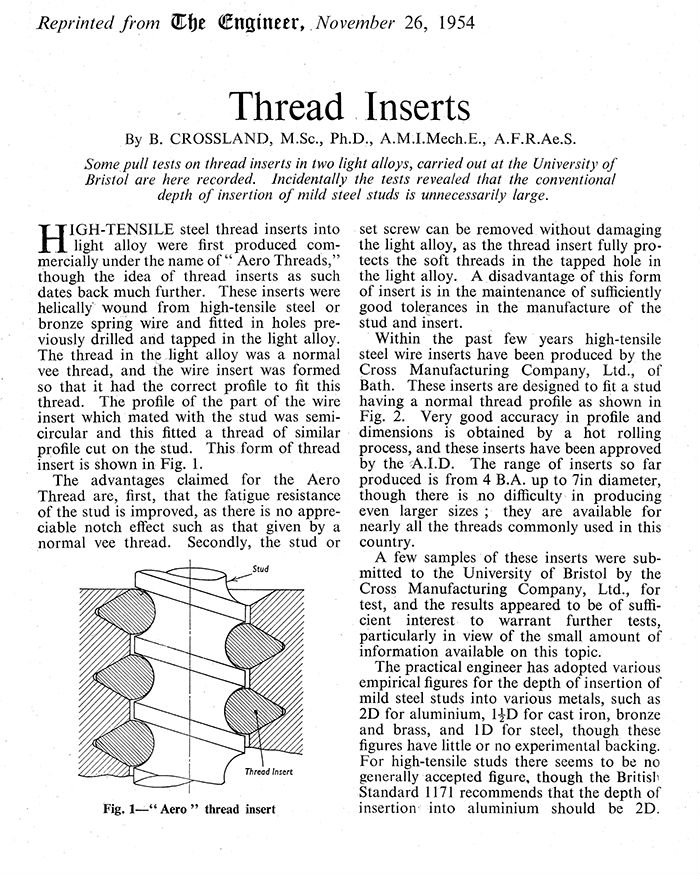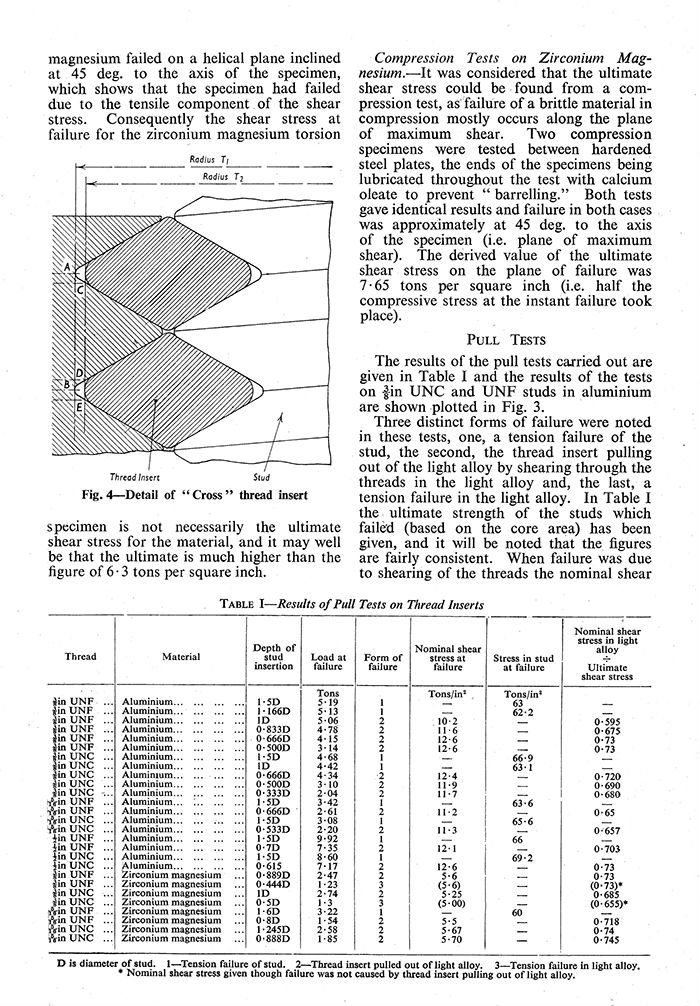Return to Main Page
Helicoil Type Threaded Inserts - Technical Studies & Data
on Pullout Strength and Fastener Breakage by The University of Bristol
Although the paper reproduced below is dated 1954, it's findings are still as current as back then and are reassuring to anybody who has any doubt about strength issues and wire type screw thread inserts [STI's]. We are not aware of a lot of other formal work publicly available on the strength of these inserts although Helicoil themselves have published data from time to time related to various specific requirements.
Our frank advice based on experience of about 40 years is that there is not a stronger thread at original size than a wire thread insert of correct length and fitted properly. However, there are some uses for thin walled thread inserts where we would not recommend helicoil type inserts but Time-Serts. If a thread is "static" i.e. not likely to be done up and undone more than a few times in its lifetime, we would always say a helicoil type thread is the strongest option. However, for threads that are used over and over again like sparkplug or sump plug threads a helicoil type insert tends to work its way out of the parent hole over time and a Time-Sert is the more permanent repair. There is not a lot of difference in strength between a Time-Sert and a wire STI and both protect soft alloys from stripping. Wire STI's do have the advantage of acting like a "shock absorber" between parent and fastener and because of this increase the fatigue life of assemblies. The other place where a solid bush such as a Time-Sert has an advantage is in threads that are difficult to access such as down a deep hole. Time-Serts are also generally easier to fit because they are solid and in particular in fine threads they help prevent mis-fitting that can occur with wire wound STI's.
There is a common strength-related pitfall we'll mention here but it applies to any type of thread insert and not just the helicoil types. And it is mainly in thread repair not in original equipment use where helicoil type thread inserts often get the blame for a problem when they don't deserve it. Light alloys seem to fatigue over time and particularly where they are constantly heated and cooled. These alloys then become less able to hold a thread without stripping. This occurs commonly in alloy engine blocks. Then when a stripped thread is repaired by an inexperienced repairer who uses a standard length helicoil type insert the insert immediately strips again. The problem here is that a longer insert should have been used or alternatively a thicker walled insert (and probably longer) would have solved the problem. However, very occasionally alloys seem to age so badly that no amount of tender care will stop a thread from stripping.



